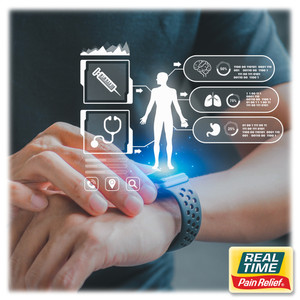8 Pill-Free Pain Remedies
16th Mar 2022
The world of medicine and therapy is changing every day. Especially for those who experience illnesses or conditions that cause chronic pain in their lives. We live in the information age, a time where people have access to more information than ever before. There has been a “standard” protocol for managing pain (especially within the last 40-50 years) that has dominated the way we think about treating physical pain. This method usually involves 3 steps.
The first is to identify the problem/source of pain; not necessarily why or how you began experiencing the pain, but only identifying what part of the body has pain.
The second step is to treat that area with the latest available medicine designed to “kill” or mask the pain.
Finally, the third step is to repeat steps one and two (indefinitely).
Immediately, you can see the problem with this methodology. There is no way someone who is dealing with chronic pain will be able to effectively treat and manage their pain with this three-step cycle because it is never-ending, provides no actual healing, and is ultimately ineffective in fully treating the patient’s ailment.
Now, as mentioned above, we have an endless amount of information about managing pain. Doctors, teachers, and ordinary people from all over the world are sharing data, information, and tools to guide people in the direction of health and healing. This “new-model” of managing pain involves alternatives that are not widely discussed by the medical community. The kinds of “alternatives” we are talking about involve food and nutrition, healthy living (managing stress, proper rest), and even lifestyle changes that show actual healing of a person’s illness or condition.
Every day, 44 people in the United States die from overdose of prescription pills. In 2013, nearly 2 million Americans reported abusing prescription painkillers. Every day 7,000 people are treated in emergency departments for using these painkillers in a manner not directed by their doctor/pharmacist. These deaths and addictions most typically stem from the use of opioids, which are used to treat moderate-to-severe pain. For years, these prescriptions have been prescribed for post-surgery, serious injury, or even cancer-related pain. However, more and more each day, these opioids are being given to anyone who walks into a doctor’s office, especially to those who are in chronic pain. This may seem like a wonderful solution to the everyday pain people feel in their muscles, joints, bones, nerve tissue and other areas, but it comes with its own price. What may not be explained to you is that if you walk down this road of taking a pill to feel better, you will more than likely need that pill (increased in dosage, of course) for the rest of your life. Your body will become dependent on that narcotic, and as time goes on, you will build a tolerance for that drug thereby requiring an increase in dosage or a change to a different, stronger prescription medication. Perhaps, this doesn’t seem like such a bad thing, but the truth of the matter is that these drugs are hard on your organs and can do damage to the body in other ways, including lowering your overall pain tolerance due to an increase of Substance P production.
Commonly, areas of the body that experience pain may be assessed by a physician, then you will probably be diagnosed and prescribed an opioid. However, during this process, there may be several things that your doctor may not explain to you. You may or may not cover exactly why you have chronic pain. The conversation between you and your doctor might include talking about your diet, your family medical history, your lifestyle habits and how often you sleep or exercise, or there is a chance that you don’t discuss any of these subjects with your doctor. In fact, some things may be overlooked or deemed unimportant by your physician. Factors like a vitamin or nutrient deficiency, stress-related ailments, or alternative treatments may often be ignored or never even considered. You might not have the chance to discuss these factors with your doctor, or find out if they could be related to the pain that you experience.
This is why we have seen a rise in the use of alternative treatment options for managing chronic pain. People are looking for more (and newer) information that will treat their conditions without resorting to longitudinal prescription drug use. Chronic pain sufferers are learning about natural ways to treat their symptoms, not just by “eating healthier” but by “eating smarter,” exercising in a way that is best for them, and getting the adequate amount of restorative rest. Many are looking for ways to manage stress, and thankfully, we now understand how much of an impact mental issues (depression, anxiety, and stress) can have on our physical bodies. Treating pain with the use of ancient eastern practices is also on the rise, as is the credibility that they effectively manage pain. As stated earlier, the amount of information that people are discovering is ever-growing. Many sufferers of chronic pain seek the advice of friends, family or support groups, however the internet is booming with websites, blogs, articles, documents and other formats of information that may prove useful to a person living in pain. This is why natural, non-prescription methods of treating pain are making such an impact in the world these days. People are finding more and more ways of not only “dealing” with everyday pain but also ways to make it go away and stay away for good.
In this article, we have listed 8 popular, easy-to-do, and effective routes that many people are taking to manage their pain, and start enjoying life again.
- Cognitive Function and its Relation to Physical Well-Being
- Thermotherapy
- Stress Management
- Sleep
- The Benefits of Exercise and How Endorphins Relieve Pain
- Diet and Nutrition (Anti-Inflammatory Foods)
- Anti-Inflammatory Analgesics
- Increase Vitamin D Intake
Pain Relief You Can Trust® Since 1998
For over 20 years, families across the U.S. have turned to Real Time’s lotions and creams for PAIN RELIEF YOU CAN TRUST®. From Lifestyle Essentials, through our Nujuvena line, to Pain Relief Formulas, Real Time has you covered. LEARN MORE





